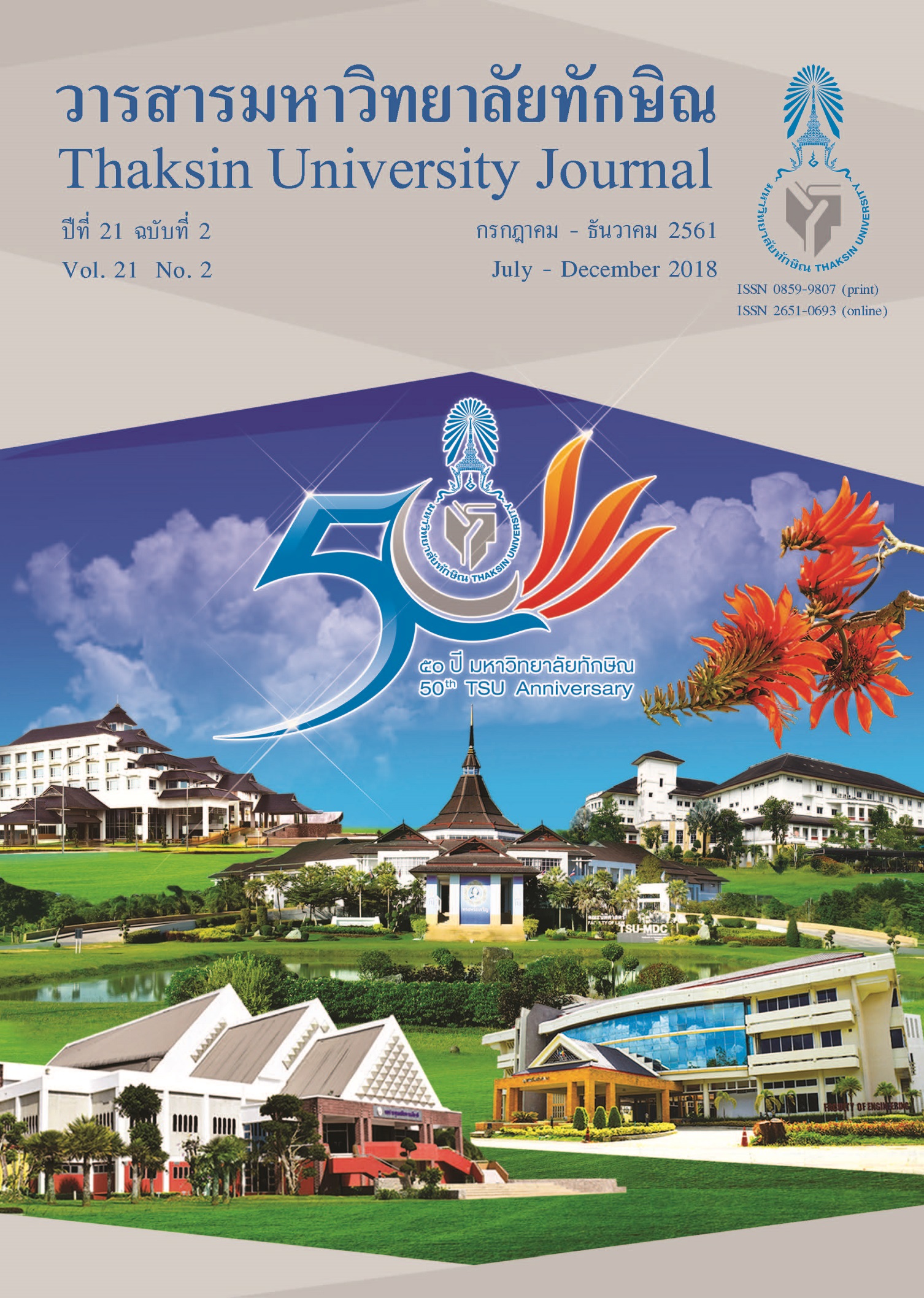Quality Comparison of Nutmeg from Thailand and Indonesia
Main Article Content
Abstract
This study was to compare the quality of nutmeg grown in Thailand and Indonesia by the standard test of the Ayurvedic Pharmacopoeia of India. The nutmeg was divided accordingly to the five resources. Thai
This study was to compare the quality of nutmeg grown in Thailand and Indonesia by the standard test of the Ayurvedic Pharmacopoeia of India. The nutmeg was divided accordingly to the five resources. Thai
nutmeg was from the four provinces, namely, Phangnga, Trang, Chumporn and Nakhon Si Thammarat. Indonesia nutmeg was from Maluku Islands. The results showed that nutmeg from Indonesia was higher quality than nutmeg from Thailand. Nutmeg from the southern west coast of Thailand was higher quality than the southern east coast of Thailand. The nutmeg from Phangnga province and Indonesia has passed the standard test. The ethanol-soluble extractive, ether-soluble extractive and essential oil content of Indonesia nutmeg was significantly higher than the Phangnga nutmeg. Although the water-soluble extractive was significantly lower than Phangnga nutmeg (p < 0.05). Furthermore, the analysis of essential oil from Phangnga and Indonesia nutmeg by GC-MS method indicated no differences between the major components, such as Sabinene, 4-Terpineol, Myristicin, Safrole and γ-Terpinene. However, the highest component of Phangnga nutmeg essential oil was Cis-Isoelemicin, whereas Indonesia nutmeg essential oil was Myristic acid.
Article Details

This work is licensed under a Creative Commons Attribution-NonCommercial-NoDerivatives 4.0 International License.
References
and Spices. 2, 399-416. Cambridge : Woodhead.
[2] Traditional Home Remedies 2013. (2013, 14 February). Government Gazette. Chapter 130 Special Issue
21 d. 30-49.
[3] Jaiswal, P., Kumar, P., Singh, V.K. and Singh, D.K. (2009). “Biological Effects of Myristica fragrans”,
ARBS Annual Review of Biomedical Sciences. 11, 21-29.
[4] Ehlers, D., Kirchhoff, J., Gerard, D. and Quirin, K.W. (1998). “High Performance Liquid Chromatography
Analysis of Nutmeg and Mace Oils Produced by Supercritical CO2 Extraction - Comparison with
Steam-Distilled Oils - Comparison of East Indian, West Indian and Papuan Oils”, International
Journal of Food Science and Technology. 33, 215–223.
[5] Kreangsuwan, D. (Author, moderator). (2004, 1 November). Thai Fruits and Vegetables are Valuable as
both Food and Medicine : Nutmeg. (Agricultural Radio Program Radio Station FM 88 MHz).
Songkhla : Faculty of Natural Resources Prince of Songkla University.
[6] Government of India. Ministry of Health and Family Welfare. Department of AYUSH. (1990). The Ayurvedic
Pharmacopoeia of India. Pt. 1, Vol. 1. India : Department of AYUSH. Ministry of Health and Family
Welfare. Government of India.
[7] Ministry of Public Health. Department of Medical Sciences. (1998). Thai Herbal Pharmacopoeia. Vol. 1.
Bangkok : Prachachon.
[8] Vityakon, P. (2004). Advanced Soil Fertility (2nd ed.). Khon Kaen : Department of Land Resources and
Environment. Faculty of Agriculture. Khon Kaen University.
[9] Muchtaridi, M., Subarnas, A., Apriyantono, A. and Mustarichie, R. (2010). “Identification of Compounds
in the Essential Oil of Nutmeg Seeds (Myristica fragrans Houtt.) that Inhibit Locomotor Activity in
Mice”, International Journal of Molecular Sciences. 11, 4771-4781.
[10] Santos, M.C.D., Lima, K.D.S.C., Silva, O.F., Oliveira, S.E.M.D., Sousa, R. B.and Lima, A.L.D.S. (2013).
“Comparison between the Composition of Nutmeg Essential Oils from Brazil and Thailand”, Anais
do Simpósio Latino Americano de Ciências de Alimentos 10 Slaca. 1, 14144.

